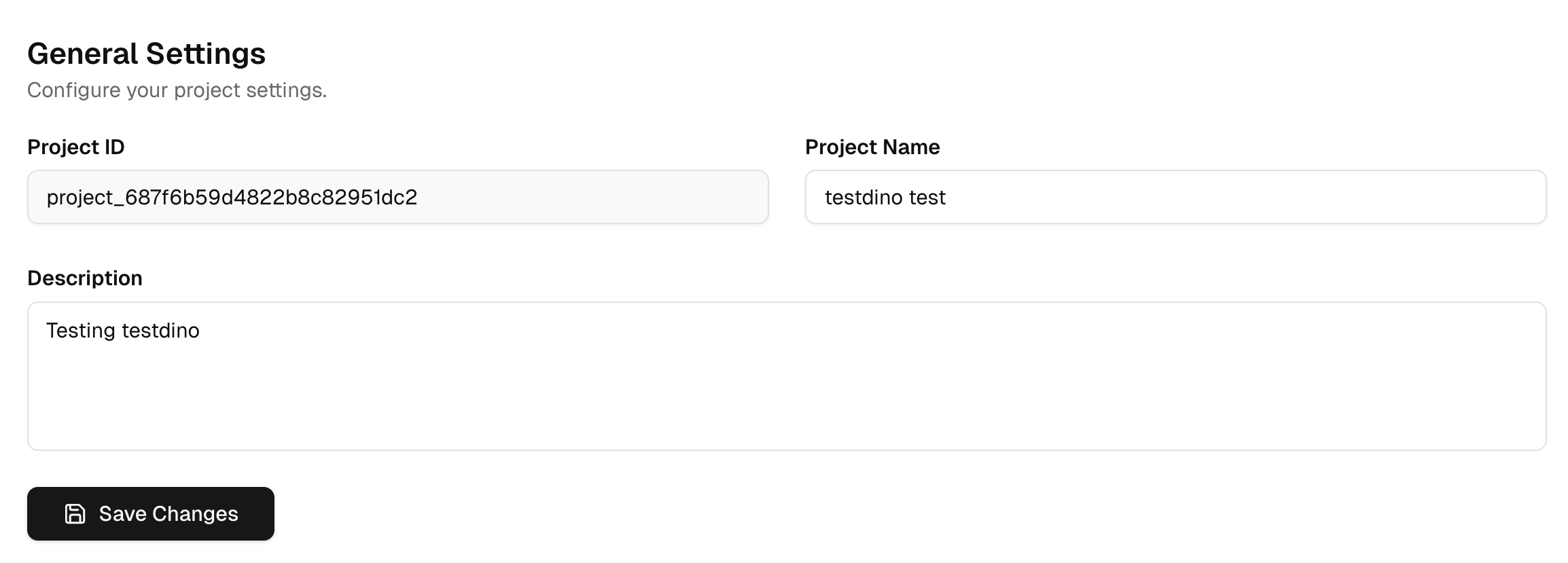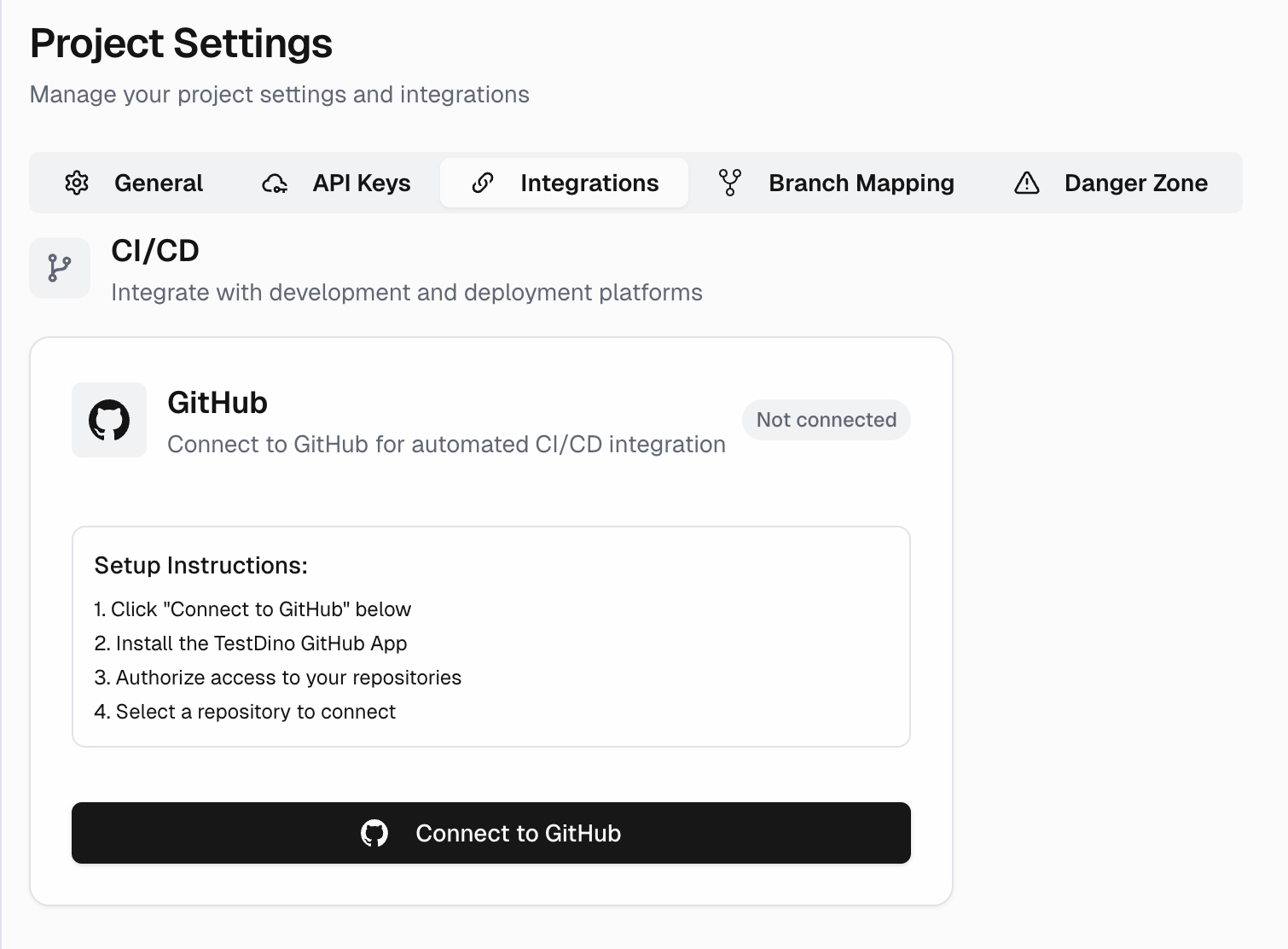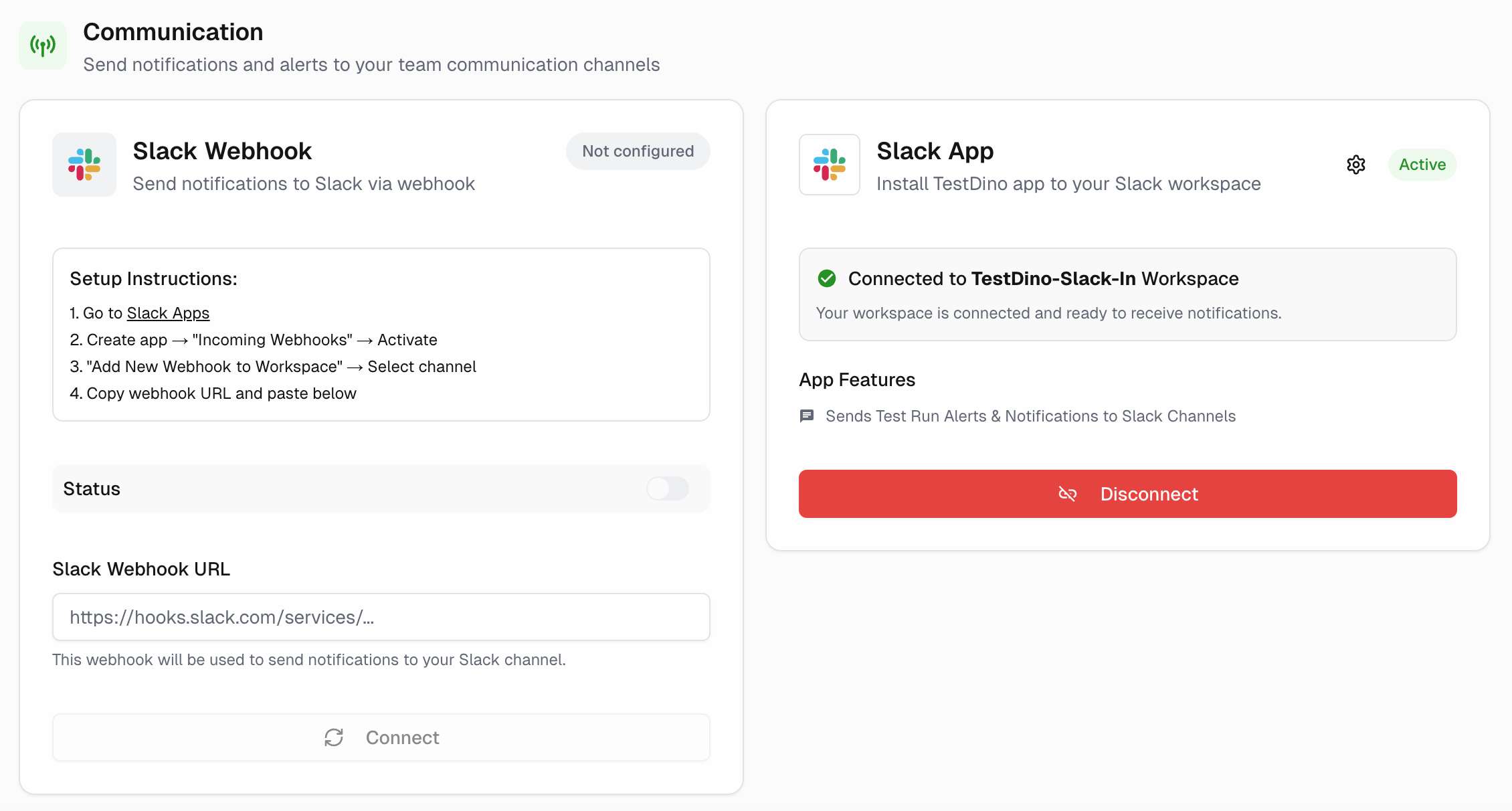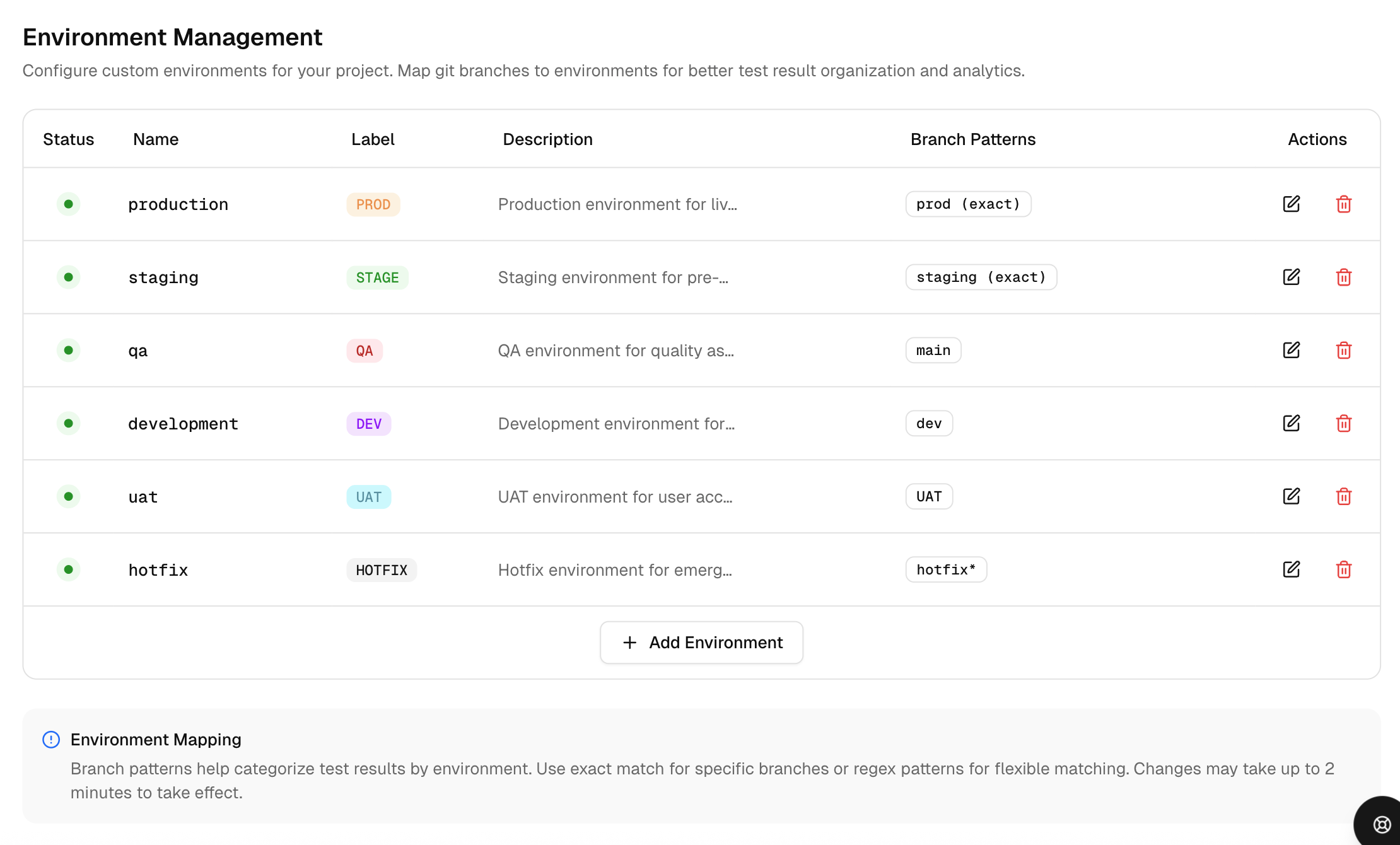Project Settings
Central place to configure a project: identity, usage limits, API key management, third-party integrations, and environment-to-branch mapping.
Update project metadata, track monthly execution quota, issue and rotate API keys, connect Integrations, and map branches to environments.
General
Define the project identity and context shown across the product.
-
Project ID. Read-only identifier used by our platform or support.
-
Project Name. Display name in headers and menus.
-
Description. Short note to describe scope or ownership.
API Keys
Create and manage credentials for local or CI pipelines and tools that send data to TestDino.
Create a Key
-
Select Generate Key.
-
Enter a Key Name and Expiration (days), 1 to 365.
-
Create the key and store the secret in your secret manager.
Manage Keys
-
Copy or view details. Use row actions to retrieve metadata as allowed.
-
Rotate. Create a replacement key, update CI, then revoke the old key.
-
Revoke or delete. Immediately invalidates the key.
Integrations
A central place to connect CI/CD, communication, and issue tracking. For installation, permissions, and workflows, see Integrations.
1. CI/CD
Github - Test-run summaries on commits and PRs.
2. Issue Tracking
To create issues from failed or flaky tests, use:
3. Communication
-
Slack Webhook - posts a test run summary to the Slack channel.
-
Slack App - posts a test run summary to the Slack channel mapped to the run’s branch environment.
If no environment mapping matches, TestDino posts the summary to the default Slack channel.
Remember: Map each branch pattern to an environment and select a Slack channel for that environment; environment mapping takes precedence over the default channel. This applies to GitHub as well.
Typical Actions
-
Connect the integration using OAuth, then grant the required scopes.
-
Configure targets, such as the default project, team, or channel, and map by environment or branch where supported.
-
For GitHub: Enable bot comments on pull requests and commits, and choose the branches or environments that should receive summaries.
-
For Slack App: Set a default channel, map environments or branch patterns to channels, refresh the channel list, and send a test message.
Branch Mapping
It connects branches to environments like production or staging, using exact names or patterns, so your results show up in the right place across the platform.
Mapping uses either exact branch names or wildcard patterns to group many branches under one environment.
Why Does It Matter?
End-to-end tests often run on pull requests and short-lived branches. Without mapping, those runs fragment across dozens of branch names.
Mapping rolls them up to the right environment, so pass rates, volumes, and alerts reflect reality.
Add or Edit an Environment
- Enter Name and a short Label used in chips and filters.
- Optionally set a Description and color.
- Define Branch patterns:
- Exact match to bind a single branch, for example,
main. - Pattern match to bind many branches, for example,
feature/*,release/*,hotfix/*. - See the Environment Mapping guide for detailed examples and pattern tips.
- Exact match to bind a single branch, for example,
- Save. Changes can take up to 2 minutes to apply.
- Environments and branches: A development or staging environment typically encompasses multiple branches, for example,
feature/123oruser/td-123. Production typically maps to one protected branch, such as,mainormaster. Teams that run tests on PRs opened or merged will execute on the PR’s head branch. Mapping ensures those runs are attributed to the correct environment. - Keep labels short, for example, PROD, STAGE, DEV.
- Review patterns when you add long-lived branches.
- Limit: up to 10 environments per project.
Danger Zone
Project Deletion
- Deletion is handled by the TestDino team at Email support@testdino.com




